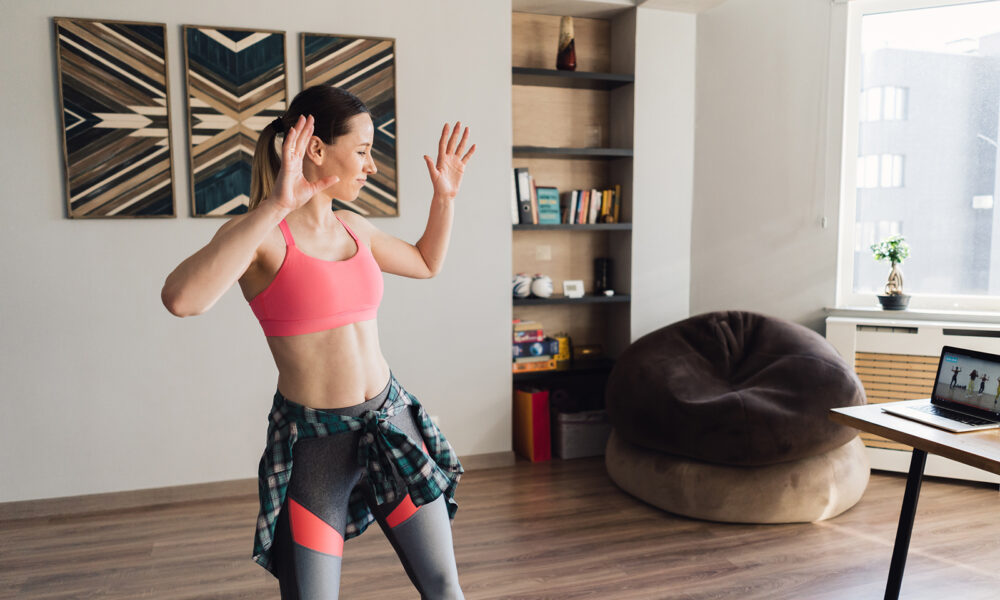

We all know that working out is good for us, but getting to the gym can be tough. Maybe you work long hours, or maybe the gym is too far a drive to be reasonable. Or maybe you just don’t like the idea of spending money on a gym membership every month.
Working out at home sounds like an attractive option, but if you don’t have the equipment necessary, can you really exercise efficiently?
The short answer is yes.
Why Work Out at Home?
There are many good reasons to work out at home. You might be more comfortable in a private space, where other people won’t be looking at you or talking to you. You might love the idea of not having to wait in line for specific pieces of equipment. You can save money, you can have more control over your environment, and you can work out anytime you want. Whatever your motivation, you’re going to find plenty of extra reasons to start exercising at home.
Hire a Personal Trainer
One of your best options is to hire a personal trainer as soon as possible. Your personal trainer will help you set your fitness goals, evaluate your current workout environment, provide advice for how to build your home workout area, and give you direction when you start working out. They’ll cost you a bit of money, but will likely be worth it.
Prioritize Your Safety
Safety should be your highest priority when working out. There are many ways you can potentially injure yourself, or set yourself up for chronic pain when you get older, so you can’t afford to neglect this area. Gyms have some advantages here, since you’ll be surrounded by people who can watch you, give you feedback, help you understand proper form, and step in if you’re in danger; at home, prioritizing your safety is even more important.
· Physical evaluation. Get a physical evaluation from a doctor before starting any new exercise program.
· Movement room. Make sure you have plenty of room to move around and that there’s nothing in your immediate vicinity that can harm you.
· Proper form. Whether you’re lifting weight, running, or practicing some other exercise, you need to have proper form. Free online videos can usually help you understand this, though it pays to have someone else watch you and give you feedback in real-time.
· Proper equipment. For certain exercises, you need proper equipment to reduce the risk of injury. For example, if you run frequently, it’s important to invest in your shoes.
· Recovery. You also need to recover properly, with a full cooldown, stretching, and adequate nutrition and rest.
Consider Buying Some Equipment
It’s possible to exercise at home even with no equipment whatsoever, but you should consider making some introductory purchases.
· Proper attire. Proper attire will make working out both safer and easier. With a good set of running shoes, a breathable shirt, and a light pair of shorts, you’ll be much more comfortable.
· Resistance bands. Resistance bands are inexpensive and they’re great way to get started with a resistance exercise. If you treat them properly, they can last forever, and they can open the door to dozens of new exercises.
· Dumbbells. You can also consider getting a set of cheap, small dumbbells – or bigger, adjustable dumbbells if you’re willing to spend a bit more.
· A bike (and indoor stand). Biking is a great form of cardiovascular exercise, and you can do it indoors if you buy an inexpensive indoor stand.
Start With Cardio
When you start building a home workout routine, you’ll want to include several types of exercise to make sure you have a well-rounded circuit. Start by adding cardiovascular exercise, which will challenge your endurance, elevate your heart rate, and build your lung capacity. Running, biking, jumping rope, and swimming are all good options.
Add Resistance Training
Cardio is great for burning calories, improving your cardiovascular health, and increasing stamina, but you’ll need some complementary benefits from resistance training if you want a truly well-rounded routine. Exercises should focus on muscle groups in your chest, your back, your legs, and your arms, with higher intensity and fewer repetitions. Resistance bands will get you started here, but eventually, you’ll probably move up to dumbbells and barbells (if you can).
Don’t Forget to Stretch
Stretching and flexibility are also important for your overall fitness. Make sure you take time to stretch after each workout, and consider adding at least one dedicated stretching routine to your weekly lineup.
There is still much to learn about the world of exercise and personal fitness. But this article should get you started with working out at home, even if you have no prior experience and no existing dedicated equipment.























